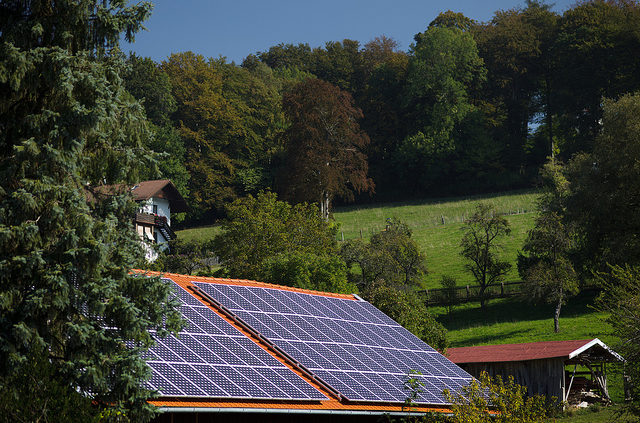
If you’re looking to install solar panels, you probably have two main questions in mind: how much is it going to cost and how much am I going to save? In this post, we’ll examine these two things in detail.
Choosing Your System
Before you can know how much anything is going to cost, you’re going to have to figure out what your needs are. How much energy are you hoping to generate? Fifty percent from solar? Eighty percent? One hundred percent?
What can your home support? Do you have a big enough roof or enough land to support a system that will allow you to generate 100% of your energy from solar?
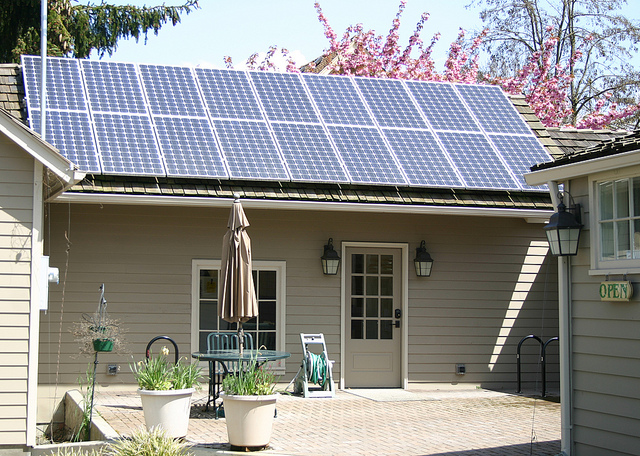
How will you finance what you decide on? Will you pay it off outright or will you open a line of credit?
What kind of solar panels will you choose? Higher efficiency, but more expensive? Lower efficiency, but less expensive? What kind of inverter will you need to have? Where will your sub-panels go? Will you need to get a new roof before installing your solar panels?
As you’ll see, this decision is a little more complicated than deciding on them and having them installed the next day. Your best bet is to contact a solar installer who will send a solar engineer specialized in sales out to your establishment to help you make these decisions and to think about a lot of things you might have never thought of yet.
You’ve Decided on Your System
You took the advice above and called on a solar energy installation company. A sales person came to your house and taught you all about solar energy – how it’s generated, the components of the system, what you’ll need to have them installed, how suitable your house is for particular types of solar panels, and the list goes on.
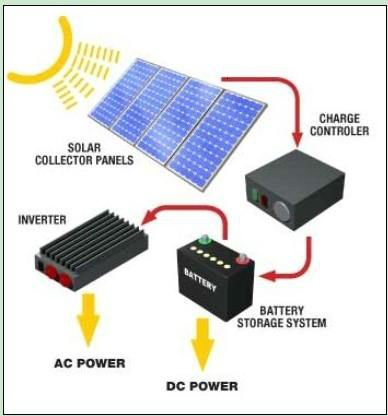
What did you decide on? The salesman suggested it’s best to install a system that will allow you to generate as much energy as possible – and for the energy you cannot get (e.g., during the night time or cloudy days), you can get from the grid. The great thing about having solar panels and still being connected to the grid is that local utility companies participate in something called net metering. Net metering is when the utility company credits you for feeding unused, solar energy, into their grid. Meaning, if you have enough electricity in your house from your own solar panels and run into excess, you can feed that excess into the grid. The utility company essentially “pays you back” for taking energy you generated off of your system.
Let’s take a real-life situation and describe the nitty gritty costs and details associated with the return on investment (ROI).
Breaking It Down
The following is a real-life scenario of a couple who decided to install solar panels on their own home in Massachusetts. Based on the salesman’s recommendations, they installed a 10kW system with 34 solar panels that covered 612 square feet. The total costs before any rebates and savings? $55,000.
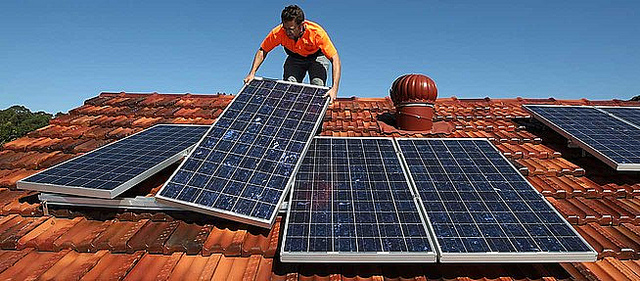
Wow! Seems like a lot, huh? Especially since most places are now reporting that the cost to install solar panels is averaging around $10,000 to $15,000 nowadays. Based on the solar energy generation predictions, this system was suggested that it would produce approximately $2,069 of electricity per year (based on a rate of $0.15kW per hour).
How They Got Over $25,000 Shaved Off the Cost in the First Year
Rebates and Revenue Generation!
Rebates: This is just like a rebate you get with any other product. Buy our product and we’ll give you $1,000 off immediately. And in the case of solar energy systems, these rebates are given by the state. Most states cap the limit to a certain amount. In this scenario – the rebate amount was capped at $2,000. And, just like most rebates, this is a one-time offer. Total Amount Saved: $2,000.
Tax Credits: Both state and federal governments offer tax incentives for installing solar energy systems. These are also capped per certain percentage and amount. In the state of Massachusetts, the state limit is 15% capped at $1,000. The federal government offers a one-time tax credit that is a bit larger – 30% off all qualified purchases. Total Amount Saved (State): $1,000; Total Amount Saved (Federal): $16,500.
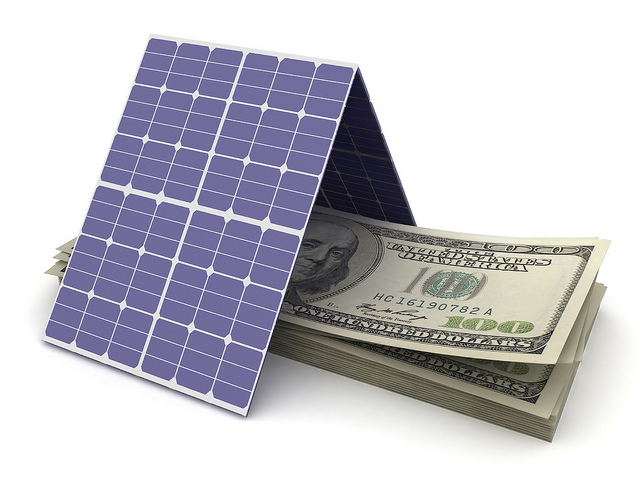
SRECs: These are Solar Renewable Energy Credits. And this is a form of revenue generation, usually handled by solar aggregators. Sold at auction, these credits are bought by companies so they can say they operate their businesses on a portion of green energy (read: solar). Most states allow you to sell these credits for up to 10 years from the installation of your system. The aggregators who sell them for you, just like financial advisors, will take a portion of the revenue you generate from these. There’s a whole science to choosing a SREC aggregator and estimating your savings per year. For the Massachusetts couple we are describing, their SRECs estimates were worth $3,725 per year. Total Amount Saved (one year): $3,725.
Net Metering: This was mentioned earlier as the credits you receive from the utility company for feeding your unused energy into the grid. Total Amount Saved: $2,069 per year.
Time to Do Some Math
So, what do these figures mean and how soon can you expect to pay off your solar energy system? For the first year alone, if we add up all of the money savings from rebates and revenue, $25,294 is shaved off the top. Bringing the total costs down from $55,000 to $29,706. It’s still a very costly piece of equipment, but that’s a lot of savings from just rebates and credits alone. Keep in mind that a 10kW system is also twice as big as what the majority of people install in their homes. So, in reality, the total cost of a system, for most people, is going to be around $15,000 or so (for a 5kW system). Of course, dependent on all the features you choose.
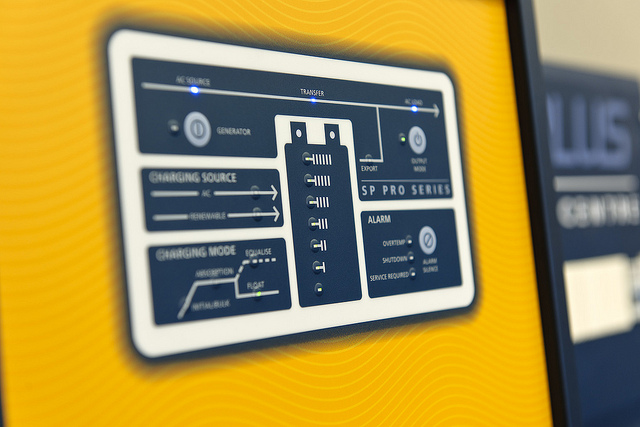
So, a savings of $25,294 in the first year is great! But, most of these are one-time offers, so, what you can expect in the years to come? Rebates and tax credits were a one-time offer, so we can’t figure those into our savings for subsequent years of owning a solar energy system. But, the SRECs are available for nine more years after year one, and the savings from net metering run the lifetime of your system. Based on annual returns from the first year of using SRECs, this Massachusetts couple predicted a savings of $3,725 per year for the next nine years. And with a net metering average of $2,069 savings per year over the life of the system (25+ years), we can predict that it would take a little over five years to recoup the cost of the solar energy system. Beyond five years and the system’s paid off and you’re living off pure profit from the sun. Right?
Let’s Consider Some Other Things. . .
Remember those solar aggregators and those great energy savings you were getting from SRECs? Great. . .but these things come at a cost. The solar aggregators have to make their money some way too. So, they charge fees. Let’s say your fee is 4%. Over the next 10 years, you’ll pay an aggregator over $1,000 to get money back. Regardless, you’re still coming out on top if you generate $3,725 a year from SRECs, but still, don’t forget the hidden fees. Just something to consider when you’re factoring in how long it will take to gain.
So, what’s the good news? For the couple in Massachusetts, some great things happened in that first year. They paid nothing to the utility company and the utility company actually owed THEM nearly $350.00 per month!
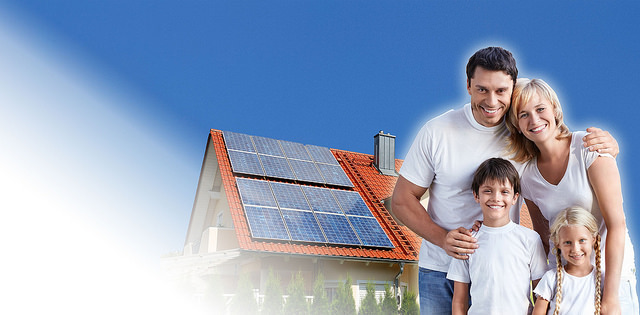
These are all great things if you plan on living your life exactly how it was estimated from the time you installed your system. In five to six years, everything’s taken care of, you’re getting money back and not spending it, and you’re being environmentally safe. But, like most things in life, after a while, we make changes. How will your life be different 25+ years from now? We might need to replace our hot water heater and the new one we choose uses more electricity than our old one did. Perhaps you choose to add onto your house and need more electricity, or buy products that need a lot of electricity to run (e.g., hot tub), so, you have more energy needs. What if the SREC market starts fluctuating and you don’t get as much back as you were anticipating? These are all real things that can happen – not that it means you shouldn’t go and get a solar system, it just means, there are always hidden costs and things to think about before installing the system.
Overall, from the figures above, it seems worth it. You’re doing good for the environment and saving money while you’re at it. Seems like an easy decision to me!

